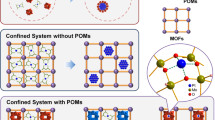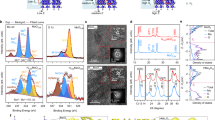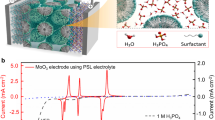Abstract
Wold, Kunnmann, Arnott and Ferretti1 recently reported the first successful synthesis of molybdenum ‘bronzes’. These inert, opaque and highly coloured phases are ternary non-stoichiometric oxides containing fractional quantities of alkali metal atoms, and like other known members of this class of solid possess some of the electrical characteristics of metals. Two potassium bronzes, red K0.26MoO3 and blue K0.28MoO3, were both prepared by the electrolysis of fused salt mixtures of K2MoO4 and MoO3 under slightly differing conditions, the first being a typical semi-conductor while the second behaved as a metal.
This is a preview of subscription content, access via your institution
Access options
Subscribe to this journal
Receive 51 print issues and online access
$199.00 per year
only $3.90 per issue
Buy this article
- Purchase on SpringerLink
- Instant access to full article PDF
Prices may be subject to local taxes which are calculated during checkout
Similar content being viewed by others
References
Wold, A., Kunnmnann, W., Arnott, R. J., and Ferretti, A., Inorg. Chem., 3, 545 (1964).
Schäfer, H., and Schnering, H. G., Angew. Chem., 76, 833 (1964).
Author information
Authors and Affiliations
Rights and permissions
About this article
Cite this article
GRAHAM, J., STEPHENSON, N., WADSLEY, A. et al. Potassium Molybdenum Oxide ‘Bronzes’. Nature 206, 924–925 (1965). https://doi.org/10.1038/206924b0
Issue date:
DOI: https://doi.org/10.1038/206924b0



